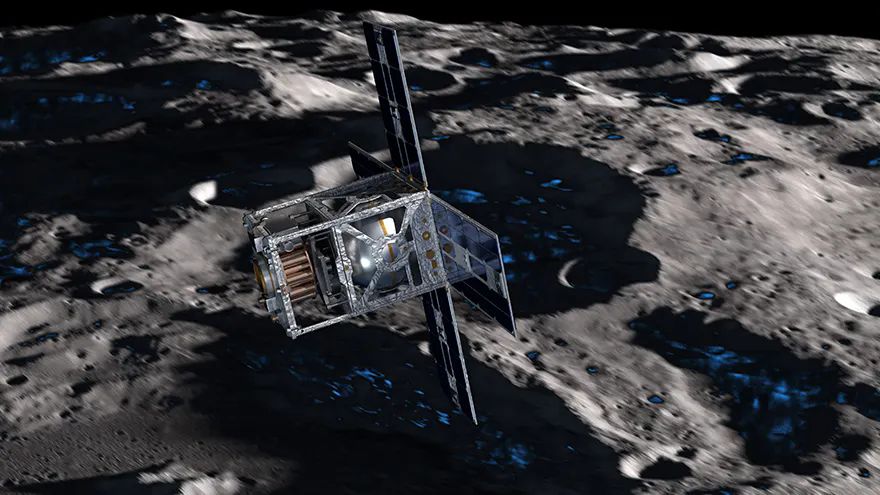 Rendering of the Oasis-1 advanced small satellite in ultra-low polar orbit around the MoonBlue Origin
Rendering of the Oasis-1 advanced small satellite in ultra-low polar orbit around the MoonBlue Origin unveiled Project Oasis at the end of last month, a multi-phase lunar initiative aimed at identifying, assessing, and utilising key resources on the Moon. The first mission, Oasis-1, is being developed in partnership with Luxembourg and will deploy an advanced small satellite into ultra-low polar orbit to produce the most detailed high-resolution maps ever created of lunar water ice, Helium-3, radionuclides, rare earth elements, and precious metals. These materials are considered vital for enabling humanity’s expansion into space while supporting sustainability efforts on Earth.
The Oasis-1 satellite will use neutron spectroscopy to measure subsurface water ice concentrations to depths of one metre, a method regarded as the most reliable for resource assessment. Its low orbital altitude allows for unprecedented spatial resolution, far surpassing traditional high-altitude orbiters.
The spacecraft will also carry magnetometers for metal detection and multispectral imaging systems to map Helium-3 and geological features. Controlled impact sequences will be used to enhance data collection and improve precision in selecting future extraction sites. Harnessing lunar water ice could provide hydrogen and oxygen for spacecraft propellant, positioning the Moon as a strategic refueling station for orbital and deep space missions.
Thriving space economyPat Remias, vice president of advanced concepts and enterprise Engineering at Blue Origin, said: “Once we know what is really there and how to access it, everything changes. Project Oasis creates the foundation for a thriving space economy that benefits everyone, including the billions of individuals on Earth who will benefit from space-based resources.”
The initiative is designed to make space infrastructure economically viable and strategically sustainable by integrating low-cost space transportation with in-situ resource utilisation. Blue Origin’s Blue Alchemist technology will complement Oasis-1 by processing lunar regolith into oxygen, solar cells, and power cables, further enabling the Moon to serve as a resource and energy hub. This approach is expected to reduce the cost of deep-space missions by up to 90%, support permanent lunar settlements, and make asteroid mining a feasible future endeavour.
Project Oasis is being developed by Blue Origin’s Space Resources Center of Excellence (SRCE), the world’s largest dedicated facility for space resource prospecting and utilisation, in collaboration with its international office in Luxembourg. GOMSpace and ESRIC are also contributing to the mission. The programme addresses one of the most significant challenges in space development — the high cost of transporting materials from Earth. By producing propellant and construction materials directly on the Moon, Project Oasis aims to unlock new possibilities for space exploration and international cooperation.